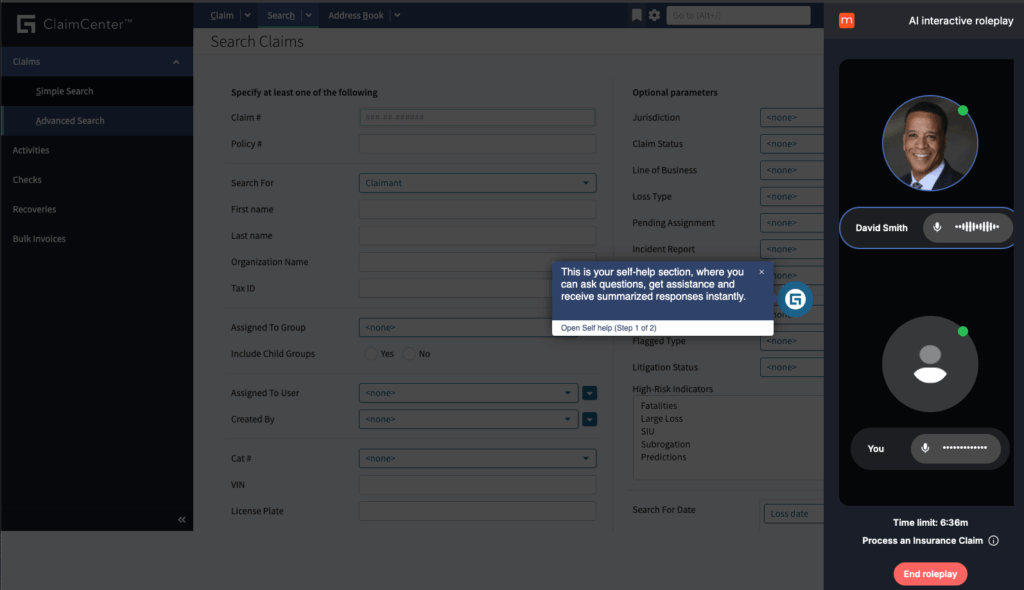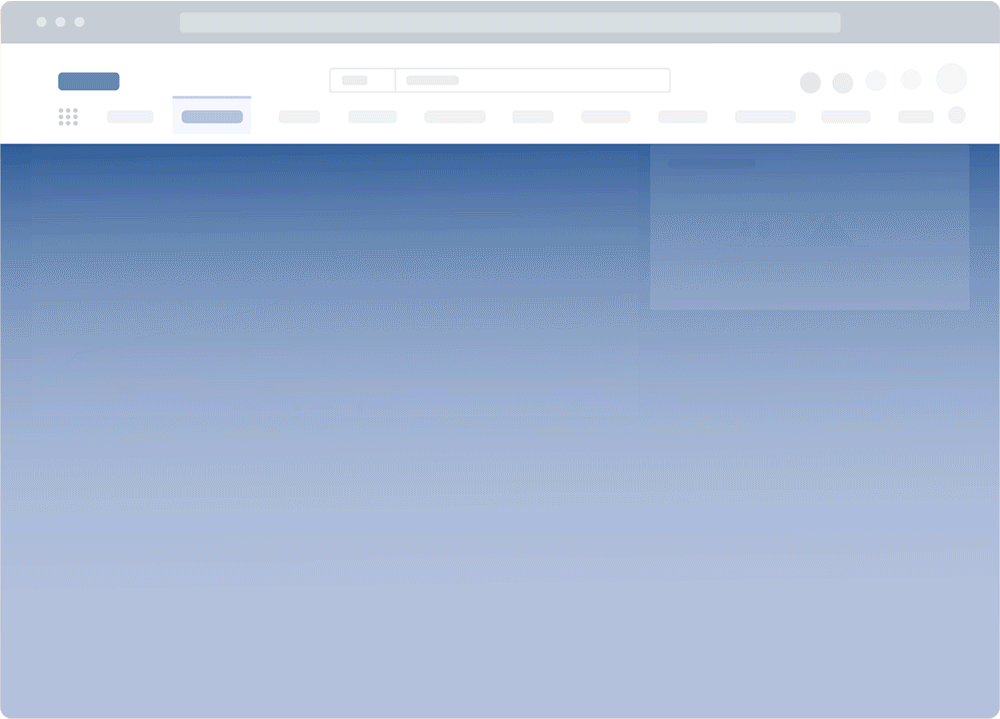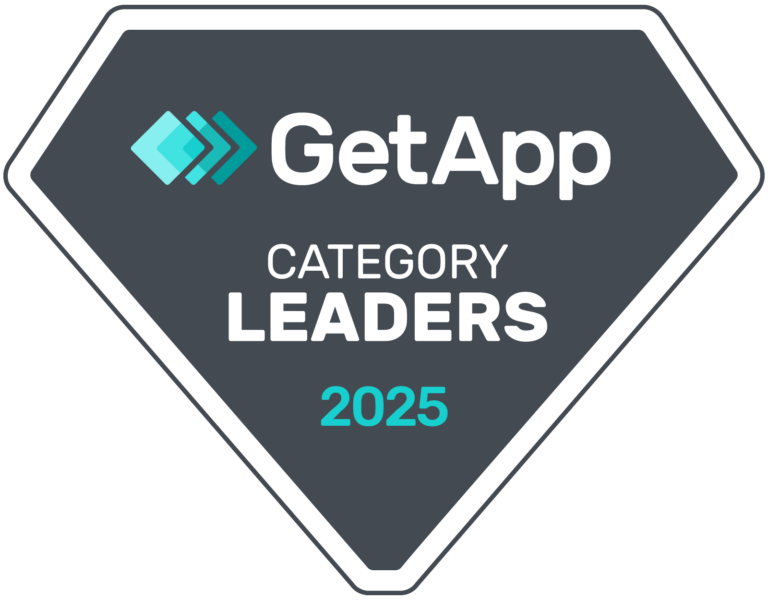As enterprise learning technology evolves, simulation-based training has become central to how organizations onboard, train, and certify their workforce, replacing static-based learning and classroom training.
Assima is an emerging training platform that enables L&D teams to create replica software environments for interactive, hands-on user training. Its approach bridges the gap between static eLearning and hands-on practice, offering users a safe space to complete complex workflows.
But despite its strengths in simulation-based learning, Assima trails behind modern, more comprehensive digital adoption and training solutions. Its lack of real-time in-app guidance, AI roleplay, analytics depth, and integration flexibility limits its value for enterprises focused on continuous enablement and measurable business outcomes.
In this article, we’ll explore Assima’s training suite, examine its core strengths and weaknesses, and highlight why Whatfix Mirror and Whatfix DAP provide a more comprehensive and scalable path to build employee confidence, accelerate time-to-proficiency, and achieve next-level performance improvement.
What Is Assima Training?
Assima Solutions offers a suite of tools designed to help teams train and onboard users in a hyperrealistic sandbox, empower them with the in-app tools they need to resolve issues on demand, serve up relevant, step-by-step guides based on a user’s role and context, enrich the training experience, etc.
Assima offers three products:
- Assima Train enables IT teams to create replica sandbox environments of enterprise software, providing an interactive interface for testing end-user workflows and providing hands-on training to end-users.
- Assima In-App Search enables end-users with an embedded knowledge base that overlays their applications to quickly find help content and SOPs without leaving the application.
- Assima Assist provides end-users with in-app guidance that walks them through tasks and workflows with on-screen overlays.
Organizations can utilize Assima for many different use cases, from employee onboarding, new software implementation, supporting digital transformation projects, change management, and more.
It can also be used for a near-endless number of application types, from common applications like CRM, ERP, and HCM to leading enterprise vendors like Salesforce, Oracle, SAP, Microsoft, and Workday, and vertical industry-specific software like EHR or insurance claims management software.
Assima Pricing
Assima lacks public-facing pricing information on its website. However, by analyzing data from user reviews on GetApp and Capterra, we can see that Assima’s pricing is based on a per-user model, starting at $2,500 monthly per user. Its annual subscription includes a base package starting at $57,000 per year, which provides 3 content author seats for 1 application, with an added yearly cost of $9,572 per additional author and $28,715 for each additional application.
6 Reasons to Consider an Assima Alternative
On the surface, Assima seems like a well-designed product that addresses the basics of digital adoption. But before you switch to another alternative, you need to weigh what it offers against other industry peers to make a realistic assessment.
This article outlines several reasons to consider an alternative to Assima. These focus on factors like the parent company’s longevity, the creator experience Assima’s backend offers, AI capabilities (or the lack thereof), compatibility with diverse ecosystems, feature innovation, user experience, and the level and scope of ongoing vendor support you can expect.
Understanding these considerations will equip you to make a more informed decision about your digital adoption strategy.
1. No AI roleplay capabilities
Assima centers on replicating application interfaces for procedural learning. Users can click through cloned environments to complete workflows and build familiarity with systems before entering production. While this method helps reduce risk and increase task confidence, it falls short of replicating the interpersonal or decision-based dynamics that modern teams encounter in real-world work environments. There’s no conversational AI, no adaptive feedback, and no simulation of fundamental user interactions; only a static recreation of the software interface.
Whatfix Mirror extends simulation training far beyond this. It introduces AI roleplay, allowing users to engage in lifelike conversations that simulate customer interactions, employee support scenarios, or internal workflow decision-making. Instead of just completing steps in a cloned system, learners can practice handling objections, troubleshooting, and communicating in real time with AI-driven personas that respond dynamically to tone, context, and accuracy.

This approach transforms training from a basic process completion to active skill application. With Whatfix Mirror, enterprises can train employees across sales, support, and service functions on both the technical and behavioral dimensions of performance—combining simulation, feedback, and analytics into a single experience that drives measurable readiness and user adoption.
2. New company and lack of online reviews
Although Assima is a relatively old company in the DAP space, having served thousands of enterprises since 2002, It lacks an online presence to match its industry-wide footprint.
A case in point is its online review presence. Specifically, on G2’s catalog of the best DAP platforms, mainstream DAP vendors like Whatfix have over 450 reviews with a 4.6/5 user review score.
In comparison, Assima doesn’t even appear on the list; when you search for its G2 profile, it’s a brief blurb with only one review. It’s the same on Capterra (7), Software Advice (7), or TrustRadius (0), where Assima’s user mindshare and review count signal that it’s an unpopular product at best or seriously disliked by its current users.
Without solid social proof, it’s only fitting that you should be concerned about Assima’s efficacy, ongoing support, or updates after you’ve signed a contract.
3. Underdeveloped content creator experience
Assima Train’s main selling point is its sandbox experience, where you can self-author content and experiences. However, users have reported that its interface isn’t as intuitive or user-friendly as those from more mature platforms. As a result, the cumbersome interface slows the creation process and increases the time and effort required to produce effective training content.
Some users also report that Assima’s customization options are less developed than those of competitors. For instance, features like advanced software usage analytics, branching logic, or quiz functionalities are entirely missing, limiting the depth of the training modules you can deploy via Assima’s WYSIWYG interface.
As a result, non-technical users may find the product quite complicated to understand. In comparison, mainstream DAPs like Whatfix offer streamlined, feature-rich content creation environments. They’re also equipped with built-in templates, enhanced visual editors, and more detailed analytics dashboards, catering better to product leaders looking for an efficient way to author self-help resources.
4. Lack of AI capabilities
AI-enhanced tools streamline the training process by offering personalized learning paths, real-time feedback, and adaptive content that helps users learn faster and more effectively. They can also offer deep insights into user behavior, identifying knowledge gaps and predicting training needs.
Currently, Assima does not integrate artificial intelligence (AI) features such as smart recommendations, predictive analytics, or automated content creation. Without these capabilities, Assima’s platform may not provide the same level of detailed performance tracking and onboarding assistance, making it harder for organizations to refine their training strategies and optimize digital adoption.
5. No auto-translation
Most mainstream DAPs are designed to localize self-help content (e.g., tooltips, hotspots, walkthroughs, etc.) for diverse, multilingual audiences seamlessly: they can automatically translate on-screen text into a user’s system-preferred language.
That way, a single training resource can serve a significantly larger audience without you having to create multiple versions of the same asset or manually update each one after the other when anything changes in your master file.
Assima does not offer built-in auto-translation or advanced localization features. This inevitably makes creating training content in multiple languages labor-intensive and time-consuming, as content creators must manually translate and adjust training modules for each language and region.
It follows that without automated translation tools, companies may need to hire external translators or localization experts, resulting in higher costs and extended timelines for deploying training content across global teams. Competing platforms often incorporate AI-powered auto-translation, streamlining the process and significantly reducing costs.
That’s also before you account for the fact that manual translation processes can lead to inconsistencies in terminology and phrasing across different languages. In contrast, DAPs with auto-translation capabilities can better ensure uniformity and provide quicker updates, thereby helping to maintain the quality of training.
6. Limited customer enablement services
Assima fails to provide its customers with additional digital adoption resources and community spaces to enhance their programs, improve end-user experiences, and learn from other digital adoption professionals.
Whatfix has heavily invested in these customer value add-ons, offering a variety of additional learning opportunities, including:
- Digital Adoption Center of Excellence: The Whatfix COE enables customers with everything they need to create a digital adoption program that drives business outcomes. It includes resources and professional services on software governance, admin training, end-user adoption, co-innovation, partnership opportunities, and more.
- Digital Adoption Blog: The leading digital adoption blog serves as an educational space, featuring over 600 learning articles and engaging 400,000+ professionals every month. It covers a variety of topics, ranging from employee and customer experiences, such as change management, digital adoption, digital transformation, product-led growth, employee training, and upskilling, among others.
- Digital Adoption Customer Club: Our customer club enables customers to share their stories, provides opportunities to sign up for upcoming webinars, earn Whatfix swag, and more.
- Digital Adoption Community: A closed community center that brings together our customers to learn from one another and share best practices.
6. Not SCORM compliant
SCORM (Sharable Content Object Reference Model) is an industry-standard for eLearning software products and DAPs that allows content to be reused between platforms, learner progress (e.g., scores, time spent, and completion status) to be tracked, and cost-effectively switched between (SCORM-compliant) platforms without having to create course content from scratch.
Since Assima isn’t SCORM-compliant, if you ever decide to switch to a compliant competitor like Whatfix, you’ll need to:
- Manually recreate your product walkthroughs, product tours, and documentation from scratch; the process is time-consuming and requires additional resources and expertise to ensure the content remains accurate and engaging as you rebuild these assets from scratch in the new platform.
- Export your DAP assets and files and upload them locally: this lack of standardized export features can result in data loss, inconsistencies, and significant delays during platform transitions.
Organizations prioritizing flexibility, scalability, and integration in their training programs may find that a SCORM-compliant alternative is better. Platforms like Whatfix, WalkMe, and Spekit provide the standardization, ease of content transfer, and seamless integration needed for efficient and cost-effective training delivery.
These platforms enable businesses to optimize their training investments, streamline the migration process, and ensure a seamless user experience across various systems.
Whatfix is the only SCORM-compliant DAP that enables organizations to easily and quickly upload in-app flows and walkthroughs to their LMS to create more hands-on, interactive learning experiences and courses.
Whatfix provides robust SCORM & xAPI compliance, enabling in-depth tracking of learning activities and seamless integration as graded courses in LMS. Whatfix supports a broader range of content formats, including PDFs, slideshows, and videos with voiceovers in multiple languages. It excels in contextualization, allowing organizations to provide users with contextualized support within their workflow directly in applications.
6 Best Assima Alternatives & Competitors
Assima’s main selling point is that it helps you create a digital twin—a sandbox where users can interact with features, play around with the UI, explore UX patterns, and get a feel for your product’s functions in a live environment.
But, once you place those advantages alongside its shortcomings, it’s a significantly weaker product compared to the dynamic alternatives within the DAP product vertical.
We’ll explore the best Assima alternatives that match its functionality and outperform it to differing degrees, and explain why you might want to switch to them instead.
1. Whatfix
- Review Rating: 4.6 out of 5 stars, across 450+ reviews
- Get a Demo
Whatfix is a full-stack digital training platform designed to help enterprises drive value from enterprise software and achieve business outcomes. With Whatfix, organizations can easily create replica sandbox environments of their enterprise applications, provide hands-on training with in-app guidance in a risk-free training setting, and encourage adoption using in-app cues and browsing aids. They can also benchmark, monitor, and track end-user adoption and process governance to identify areas of friction and user dropoff.
Our platform combines multiple functions aimed at simplifying your end-users’ onboarding and ongoing usage, namely:
- Mirror: A virtual sandbox where you can create high-fidelity interactive replicas of any Web application, so your users can learn how it works through a WYSIWYG interface. That way, thousands of end-users can access training and onboarding experiences tailored to their use cases and roles in a controlled, life-like environment where their mistakes don’t affect your ongoing operations.
- DAP: Whatfix’s DAP offers in-app guidance in the flow of work, using unobtrusive, contextual cues such as Flows, Task Lists, Smart Tips, Pop-Ups, Launchers, and Self-Help (right within your product’s UI).
- Product Analytics: Analyze how your end-users interact with your digital assets (Web and desktop applications) using privacy-preserving, no-code event tracking. Use reports and insights like Funnels, Cohorts, and Journeys to identify where users experience friction, where process mishaps occur, and where dropoff occurs to take a data-driven approach to process optimization and user adoption.

Whatfix has invested in AI capabilities that span content creation, in-app support, analytics, and simulation-based training, built around three core AI agents powered by its ScreenSense engine.
- Authoring Agent accelerates content creation, letting teams generate walkthroughs, Pop-Ups, Smart Tips, and visibility rules using natural language prompts.
- Guidance Agent provides contextual, conversational support within the workflow.
- Insights Agent transforms usage and behavioral data into actionable analytics that help identify friction points and training needs.
Across its Self-Help and DAP modules, Whatfix utilizes AI to make support faster and more accessible. Features like Quick Read summarize dense documentation into short, accurate responses, while Ask Whatfix AI enables business users to query analytics conversationally. The AI Style Editor and Visibility Rules simplify customization and personalization—allowing non-technical users to control design and deployment logic through natural language inputs.

In training, Whatfix Mirror applies AI to create dynamic, simulated learning experiences. Beyond cloning applications for hands-on workflow practice, Mirror’s AI Roleplay feature enables employees to engage with AI-driven personas in realistic, scenario-based conversations. Teams can rehearse sales calls, customer interactions, or internal support exchanges and receive immediate, data-backed feedback on performance and communication.

Together, these capabilities redefine how enterprises enable their workforce—reducing manual effort in content creation, embedding AI-driven support in the flow of work, and elevating training from static learning to interactive, measurable skill-building.
And, compared to Assima, Whatfix is SCORM-compliant; has an extensive footprint, with tens of thousands of enterprise customers, including Caterpillar, Experian, and Cisco; enables users to author content using our AI-enabled scribe; auto-translates your training content into 105+ languages, so your end-users can access it in their preferred language.
2. Cloudshare
- Review Rating: 4.6 out of 5 stars, across 205 reviews
- Pricing: No public-facing pricing data available
Cloudshare is a cloud computing software platform that enables enterprises to create and serve IT virtual lab experiences at scale, including sales demos, software, and hardware training sessions, product onboarding, etc. Cloudshare’s virtual environment means your sessions can either be self-paced, instructor-led, or replica sandboxes where your end-users train to use your software tools.
Specifically, Cloudshare helps you clone your applications, serve them to your end-users through a virtual machine so they can play around at their own pace, and give you detailed insights on the UI elements they interacted with and any tasks they completed.
Compared to Assima, Cloudshare can translate text on demand (via the Google Translate integration), has a significantly advanced creator experience, and has a developed market footprint. On the downside, the product tends to lag severely when you’re accessing large files (since it’s served from virtual machines), pricing is on the higher side, and initial setup and any changes to those environments thereafter are unnecessarily complex.
3. Bright Software
- Review Rating: No online review presence
- Pricing: No public-facing pricing data available
Bright offers to help enterprises reduce training costs by up to 50%, while ramping end-users up to speed 2x faster. It does that using a combination of scenario-based simulations, high-fidelity product replicas you can build without coding, simulated conversations with branching logic (if-then workflows), asynchronous and live coaching sessions (that can be built in minutes) that rate user development and provide personalized feedback, all combined into Bright’s platform.
Think of Bright less as a training and onboarding product and more as a learning experience platform that combines native functionality with an integration layer on which you can connect third-party learning and media tools like Loom and Vimeo, and LMS platforms like Docebo, Tableau, and Workday Learning.
Within the Bright sandbox, your L&D teams can build detailed training environments with multiple lifelike situations that end-users can get creative as they navigate. You, on your end, get in-depth usage analytics that show the effectiveness of your program and highlight where you can adjust your training stack.
While their training stack is easily one of the most advanced on our list, similar to Assima, Bright isn’t SCORM-compatible, lacks the online footprint you’d expect from a long-term training and onboarding partner, and the content localization you’d need to scale your training to an international audience.
4. ReadyTech
- Review Rating: 4.5 out of 5 stars, across 209 reviews
- Pricing: No public-facing pricing data available
(Similar to Cloudshare) ReadyTech offers a virtual IT lab experience. Right off the bat, it’s obvious that they’re an enterprise-first product, targeted at large L&D departments, executives, instructors, and government agencies. Their product scope can be broken up into three verticals:
- A virtual instructor-led training model where your L&D experts use Ready to simulate a classroom experience, where they can take control of students’ on-screen experience, engage them via video conference and chat, and test them with quizzes, exams, and polls, to evaluate their knowledge.
- Self-paced training experiences that enable you to import resources from your LMS and CRM platforms, embed multimedia resources (PDFs, MP4 videos, etc.) in your user-facing experiences, and resolve any issues with end-users via a dedicated support portal. ReadyTech’s self-paced product line is designed around the needs of businesses looking to build an online training marketplace that users can access on demand.
- Remote-training environments that host virtual replicas of your product that your users can tinker with.
While ReadyTech is SCORM-compliant and offers an extensive feature set, its interface looks dated, localization options are limited (to 14 languages), virtualization can make performance extremely laggy, and connectivity issues can affect the flow of on-demand learning.
5. Oracle UPK
Oracle User Productivity Kit is a comprehensive tool for creating, managing, and delivering enterprise learning content. It supports businesses in streamlining user adoption of enterprise applications by producing materials like simulations, training guides, and job aids tailored to help enterprises drive their adoption of products within the Oracle ecosystem.
Oracle UPK records your users’ UI interactions (e.g., keystrokes and gestures) and converts them into reusable tutorials, assessments, and interactive simulations that you can organize and publish across multiple formats for distribution to end-users.
Among others, UPK offers:
- Content recording and publishing: Records workflows and creates documentation, simulations, and assessments in various formats.
- Multi-format outputs including interactive guides, HTML content, and SCORM-compliant eLearning modules.
- A SCORM-compliant stack that enables integration with resources built on SCORM 1.2 and 2004 standards.
- Localization and translation into 31 major languages.
- Customizable templates for branding and structuring learning materials.
- Reporting and Tracking: Basic reporting tools for tracking content usage and user progress.
Downsides: First off, Oracle officially discontinued UPK support as of 2022, which means there’ll be no more security or compliance upgrades going forward. And since it’s Oracle-centric, UPK is limited outside the Oracle ecosystem, supports only 31 languages (compared to Whatfix’s 105, for example), offers an extremely basic analytics suite, and its pre-built flows tend to break after any minor changes to your product’s UI.
Why Whatfix Is the Best Assima Alternative
Whatfix is a digital adoption platform (DAP) and sandbox application creation tool built for large-scale enterprise applications, regardless of vendor, application type, or industry. With Whatfix, organizations can drive adoption, maximize technology investments, and optimize tasks and workflows to drive business outcomes. With Whatfix, it’s simple to create replicate application environments to provide hands-on training and user testing across any application type, without needing engineering support.

Whatfix has successfully onboarded and trained thousands of end-users for major enterprises across Microsoft, Oracle, SAP, Salesforce, Workday, and hundreds of other vendors and homegrown applications.
With Whatfix, delivering in-app guidance, personalized training, and on-demand support across various apps is simple. This enables end-users to utilize software to its fullest potential and helps maximize technology ROI. Our platform stands out for its multi-format content creation, comprehensive change management, and advanced analytics, ensuring users adopt new processes efficiently across their tech stack.

Looking for other reasons why Whatfix is a superior digital adoption partner in comparison to leading DAP, sandbox creation, and end-user training tools like Assima? Here are a few additional reasons:
- Element Detection Stability: Whatfix’s robust element detection remains stable even with changes in the app’s UI, while other leading DAPs and in-app guidance tools’ flows are prone to breaking if the UI changes.
- AI-Powered Self Help: Whatfix integrates with your process documentation, SOPs, user training, and knowledge base, allowing users to search for any support-related or task-related question without leaving the application. Self Help uses AI to learn from your documentation and training, allowing it to conversationally answer and summarize documentation inside your applications.
- Multi-App Scalability: Whatfix can scale across all enterprise software vendors or in-house-created apps.
- We are DAP Specialists. We at Whatfix are the experts in digital adoption. We have a robust library of guidance templates and a full team of professional service adoption experts ready to help support your user adoption needs.
Whatfix stands out as the best overall DAP because of its ease of use, variety of features, versatility, advanced analytics, customer value add-ons, AI-powered roadmap, and customizability. Whatfix disrupts how end-users consume content, maximizing your ROI and employee productivity by enabling end-users with contextual experiences that create frictionless digital experiences that help them drive business outcomes.





